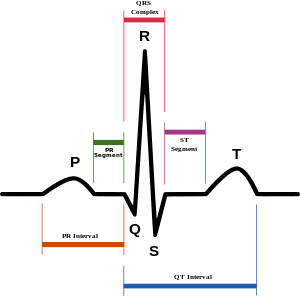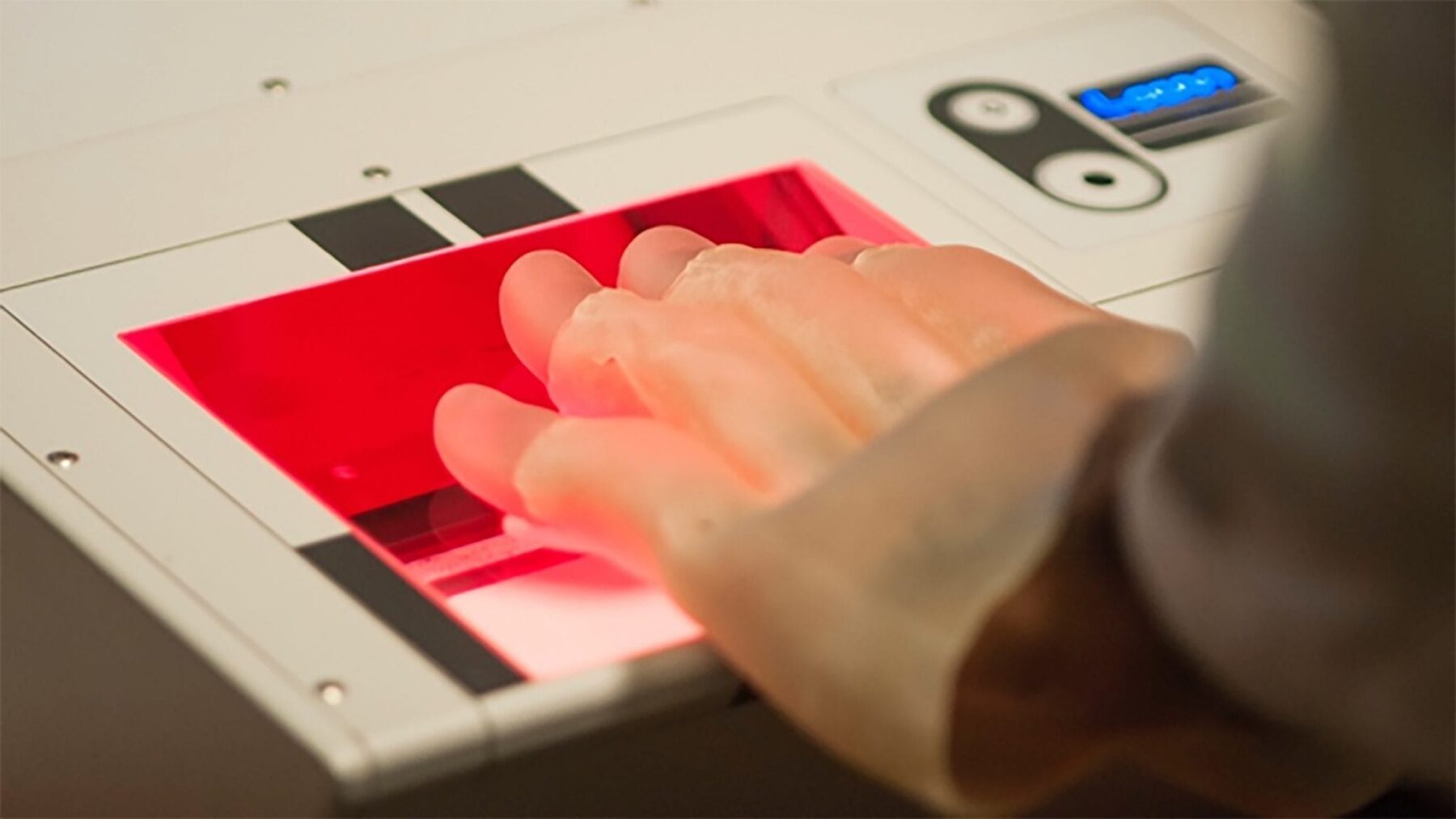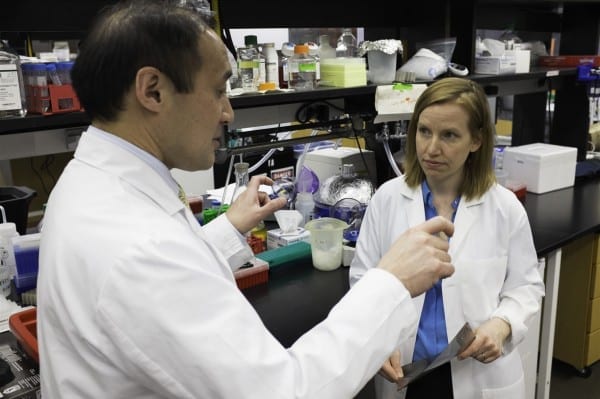
IN “SKYFALL”, the latest James Bond movie, 007 is given a gun that only he can fire. It works by recognising his palm print, rendering it impotent when it falls into a baddy’s hands.
Like many of Q’s more fanciful inventions, the fiction is easier to conjure up than the fact. But there is a real-life biometric system that would have served Bond just as well: cardiac-rhythm recognition.
Anyone who has watched a medical drama can picture an electrocardiogram (ECG)—the five peaks and troughs, known as a PQRST pattern (see picture), that map each heartbeat. The shape of this pattern is affected by such things as the heart’s size, its shape and its position in the body. Cardiologists have known since 1964 that everyone’s heartbeat is thus unique, and researchers around the world have been trying to turn that knowledge into a viable biometric system. Until now, they have had little success. One group may, though, have cracked it.
Foteini Agrafioti of the University of Toronto and her colleagues have patented a system which constantly measures a person’s PQRST pattern, confirms this corresponds with the registered user’s pattern, and can thus verify to various devices that the user is who he says he is. Through a company called Bionym, which they have founded, they will unveil it to the world in June.
Bionym’s first plan was to sell just the heart-identification software, in the hope manufacturers of phones, tablets and the like would embed into their devices a sensor that could use it. This would mean that, like James Bond’s gun, such machines could be operated only when the owner was touching them. The firm’s managers, though, quickly realised that persuading device-makers to do this was never going to happen. So instead, the company developed its own device: a wristband called Nymi that talks to other machines by way of Bluetooth and tells them that the person wearing it is, indeed, who he says he is. Nymi might thus, for example, replace passwords for its wearer’s computers. It might unlock and start a car. And it could even stand in for house keys or be used to verify financial transactions that currently need a PIN.
You can’t lose your heart
Biometric recognition systems, from hand geometry, via face recognition and fingerprints, to iris recognition, are becoming more common. But none has yet swept the board, partly for the reason Bionym found when it tried to get device-makers to put recognition hardware in their machines: manufacturers do not want the expense and hassle of doing that. Nymi gets rid of this problem.
ECGs are also difficult to clone. Cloning a biometric marker takes two steps. First it must be “skimmed”. In the case of an ECG, this means duping someone into touching a surface that can record his heartbeat. That makes ECGs more secure than, say, fingerprints, which can be recovered from nearly anything that has been touched.
The Latest Bing News on:
Biometic tool
- MSGE wins dismissal of biometric data privacy law allegationson May 9, 2024 at 1:01 pm
Madison Square Garden Entertainment has succeeded in getting a lawsuit over its use of facial recognition against it dismissed.
- Unraveling The American Data Privacy Patchwork: Will the American Privacy Rights Act Succeed?on May 9, 2024 at 11:46 am
As the focus on protecting personal data continues to grow with the ever-widening adoption of artificial intelligence (AI) tools, exponential increases in the number and breadth of data breaches, and ...
- OpenAI releases new content authentication toolson May 8, 2024 at 11:14 am
With four billion people expected to vote in 2024, OpenAI has updated its AI watermark to combat election misinformation.
- Shop Like A Sleep Editor: The 10 Best Products For A More Restful Sleepon May 8, 2024 at 9:43 am
Great sleep can be hard to come by, but certain products make it far easier—and soft linens are just the tip of the iceberg. Here's what else our sleep editor swears by.
- The dark side of virtual try-on tools: Safeguarding biometric dataon May 8, 2024 at 7:19 am
Hackers are finding ways to steal biometric identifiers, like facial recognition and fingerprints. Here’s how to avoid data breaches. The post The dark side of virtual try-on tools: Safeguarding ...
- What to Consider When Incorporating AI into Your Retail Businesson May 8, 2024 at 5:28 am
As retailers expand their use of AI technologies, they must be mindful of the legal implications raised by these novel tools.
- Scientists employ geology tool to detect atomic fingerprints of canceron May 7, 2024 at 9:45 am
Scientists at the University of Colorado Boulder and Princeton University have, for the first time, employed a tool often used in geology to detect the atomic fingerprints of cancer.
- Addressing the Deepfake Risk to Biometric Securityon May 7, 2024 at 5:00 am
To effectively counteract the sophisticated threats posed by deepfake technologies, organizations must enhance their identity and access management systems with the latest advancements in detection ...
- UK police have used PimEyes facial recognition search tool over 2000 timeson May 6, 2024 at 9:46 am
Scotland Yard has been forced to impose a ban on use of facial recognition technology from PimEyes by Metropolitan police officers.
- Security News This Week: A New Surveillance Tool Invades Border Townson May 4, 2024 at 3:30 am
Plus: An assassination plot, an AI security bill, a Project Nimbus revelation, and more of the week’s top security news.
The Latest Google Headlines on:
Biometic tool
[google_news title=”” keyword=”biometic tool” num_posts=”10″ blurb_length=”0″ show_thumb=”left”]
The Latest Bing News on:
Biometrics
- Idex’ focus on Asian biometric smart card market nets another partneron May 9, 2024 at 9:44 am
Chief Commercial Offer Eklof tells Biometric Update that Idex’ deal with Mutual Trust represents a big opportunity, as it is one of the country’s top 10 banks.
- IDEX Biometrics brings biometric cards to market with large smart card manufacturer in South Asiaon May 8, 2024 at 6:14 pm
IDEX Biometrics and one of the largest smart card manufacturers in South Asia are deploying smart cards across Asia and globally. With over 3 billion cards manufactured to date and a production ...
- Makerere staff want teaching equipment not biometrics - MUASAon May 8, 2024 at 2:01 am
The Vice Chancellor of Makerere University, Prof Barnabas Nawangwe says the biometric system is intended to check staff absenteeism and fraudulent practices ...
- IDEX Biometrics is bringing biometric cards to market with large smart card manufacturer in South Asiaon May 8, 2024 at 12:30 am
IDEX Biometrics and one of the largest smart card manufacturers in South Asia are deploying smart cards across Asia and globally. With over 3 billion cards manufactured to date and a production ...
- U.S. Travel denounces proposal to curtail airport biometricson May 7, 2024 at 5:00 pm
"Eliminating the use of biometrics -- such as facial scans -- will set America back by decades and only misinformed members of Congress are to blame." Cover Story: Is the government failing travel?
- SIA announces 2024 winners of the SIA Women in Biometrics awardson May 7, 2024 at 8:43 am
Winners will be honored for their leadership and contributions in biometrics and security at the 2024 SIA GovSummit.
- Behavioral Biometrics Market to Surpass Valuation of USD 15.08 Billion By 2032: Astute Analyticaon May 7, 2024 at 8:30 am
Global behavioral biometrics market, driven by the BFSI sector, is rapidly growing due to its ability to prevent sophisticated fraud, enable secure and seamless authentication, meet strict regulations ...
- SIA announces 2024 winners of the Women in Biometrics Awardson May 7, 2024 at 8:28 am
Md.—The Security Industry Association (SIA) has named four women biometrics leaders as recipients of the 2024 SIA Women in Biometrics Awards.
- Behavioral Biometrics Market To Hit USD 11.64 Billion By 2030 Due To The Integration Of AI And Machine Learningon May 5, 2024 at 5:55 am
( MENAFN - Evertise Digital) - The Behavioral Biometrics Market , which was valued at USD 2.01 billion in 2022, is projected to soar to USD 11.64 billion by 2030, growing at a robust CAGR of 24.5% ...
- The Breach of a Face Recognition Firm Reveals a Hidden Danger of Biometricson May 2, 2024 at 8:24 am
Outabox, an Australian firm that scanned faces for bars and clubs, suffered a breach that shows the problems with giving companies your biometric data.
The Latest Google Headlines on:
Biometrics
[google_news title=”” keyword=”biometrics” num_posts=”10″ blurb_length=”0″ show_thumb=”left”]










